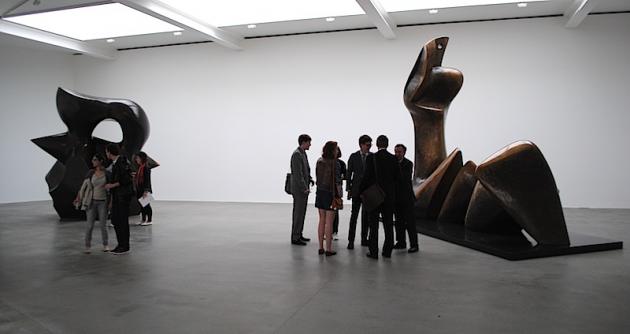Late, Large Forms Still Impress A Generation On – REVIEW
Gagosian Gallery presents large bronze works by the late British sculptor Henry Moore, completed in the 1960s and 70s. For the first time, Gagosian opens all of its wall partitions in order to give breathing room to these impressive works.
Stepping off the heated pavement and into the air-conditioned gallery, I entered into the large, almost warehouse space of Gagosian Gallery on Britannia Street, admittedly for the very first time. Wide, airy rooms lit by natural light streaming in from the ceiling housed a handful of larger than life bronze sculptures.
My first thought upon entering was, oh no – not another modernist sculpture exhibition, please! But warming to the comfortable lightness of the space and beginning to take in the sculptures of their own accord, I quickly changed my tune, and Moore’s works slowly began to reveal to me their magic.
Taking in the title of the exhibition, Late Large Forms, clearly scale is key to understanding these bronze works, now nearly 50 years old. Moore has said, “Everything I do, I intend to make on a large scale… Size itself has its own impact, and physically we can relate ourselves more strongly to a big sculpture than to a small one.” His words ring true as each of his sculptures sits just above eye level, relating to the viewer on an oddly human scale despite their enormity.
The largest bronze work in the gallery sits just beyond the entrance; a gorgeous rust green colour (as if the sculpture has been steeped in the ocean) catches the eye from across the room. Large Two Forms (1966) takes organic, swooping gestures to create its form, defining apertures and creating depth within the work, and encouraging a mobile, 360 degrees discovery by the viewer.
Without the distraction of wall texts, viewers are drawn to the middle of each room to interact directly with these sculptures, to react physically to their contours and inspect the varied surface textures. Some sculptures have visible and deliberate etchings, or scratches into the material, others are buffed beyond recognition as bronze, and take on a more stone or marble-like quality.
Though using a common inorganic metal alloy, Moore’s works reference organic shapes, and seem to emit a strange life force from within. Equally, they assume unique personalities, shifting from brutal to soft in one smooth motion of form. Another impressive work, Large Spindle Piece (1974), stands at the back of the gallery, presenting an impressively balanced duality of form; it is at once smooth and angular, pointed and polished, receding into itself and advancing on the viewer like many works in the gallery.
It is hard to imagine any other exhibition in this space – Gagosian Gallery seems perfectly in tune with the scale and temperament of these exquisite large sculptures by Henry Moore. Late Large Forms showcases the glorious height of the medium by one of Britain’s most celebrated artists. And, it has taught me never to be too quick to judge when it comes to modernist art.
Words Sharon Strom Photo: © ArtLyst 2012

